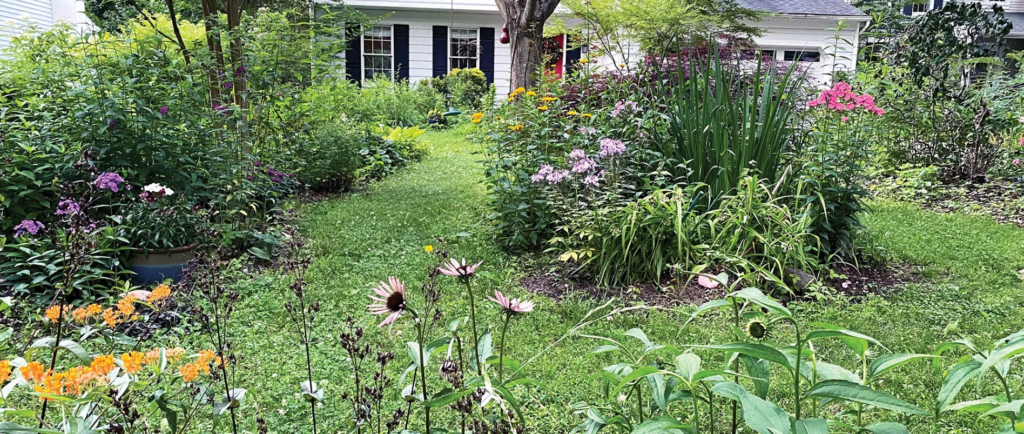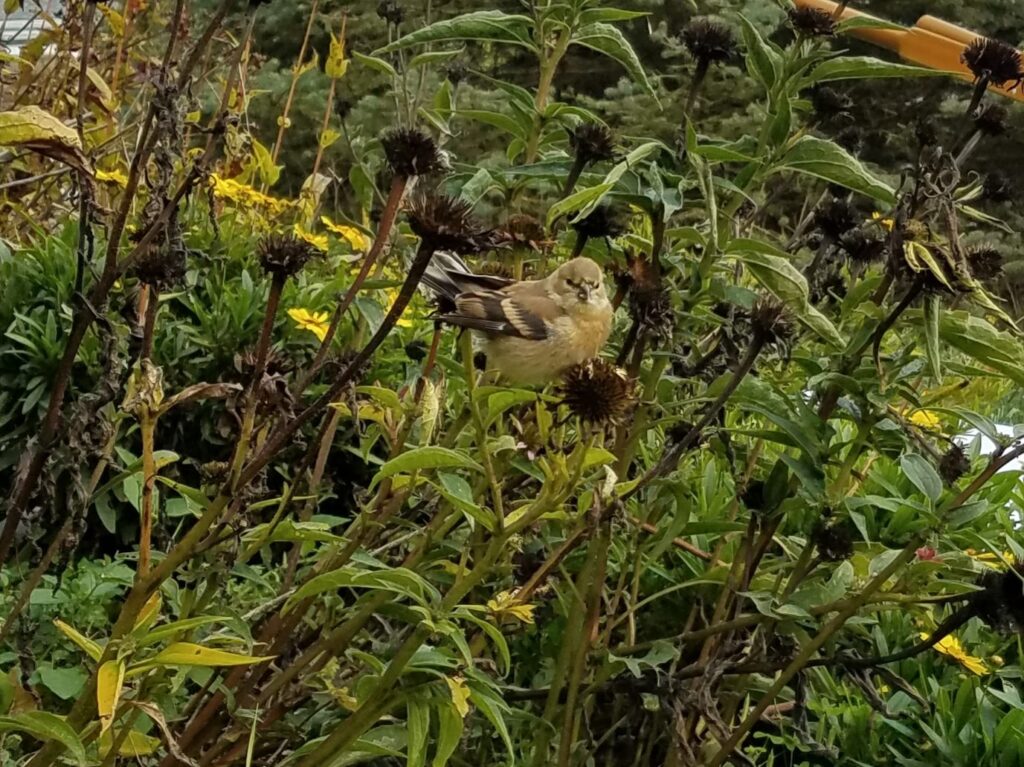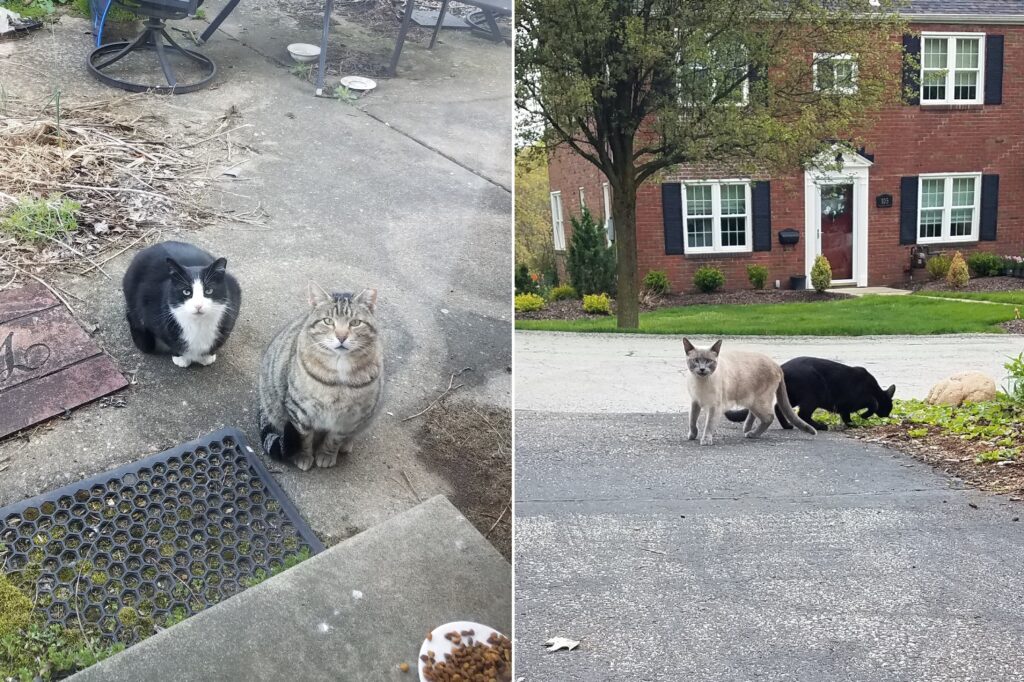A few weeks ago, John Oliver had an episode on Homeowners Associations,[1] which duly horrified and angered both Christian and myself. We get annoyed enough at the occasional reminder from our borough about trimming the hedge that (we believe) isn’t on our property or trimming weeds that pop up along the street while we’re away. I absolutely recognize that there are some municipal ordinances in place for the purposes of health and safety, but the idea of strict but arbitrary rules based on someone else’s personal preference is abhorrent to both of us, and we know we would never survive in such a situation.
I had heard accounts from my parents’ friends about their HOA, which involved ridiculous stories such as getting in trouble for leaving a Christmas wreath up after New Years. I already knew that the level of control being exerted by these associations was extreme, but the more I thought about the John Oliver episode, which described HOAs as “pushing aesthetic uniformity” in an attempt to preserve property values, the more I realized how harmful certain arbitrary rules can really be – not just for the people who have lost their homes because of excessive fines – but for the environment too.

Image credit: [2]
It was while I was pulling weeds from my ever-expanding pollinator garden, musing over what I would require if I ran an HOA (for the record: a minimum number of native pollinator-supporting plants, full participation in No Mow May,[3] and a complete ban on synthetic fertilizers and pesticides), I was reminded that this obsession with uniformity, predictability, and order in our landscaping is not only unrealistic and fundamentally un-natural, but it is also a major contributor to environmental degradation. The quintessential suburban ideal, which features the great American lawn,[4] is ultimately an aesthetic and biological monoculture. That approach often involves the use of non-native species, which require massive amounts of water and fertilizer, exacerbating water shortages, petrochemical expansion, and habitat loss for native species.
Audubon to the Rescue
My phone is either listening, or the social media algorithms are just that good, but within days of that thought, I saw a story in my newsfeed about a Virginia homeowner who was able to stand up to her HOA and keep her native plants because she had made her yard a certified wildlife sanctuary through the Audubon Society.[5] Such certification programs are not new to me (and I have a list of potential blog posts lined up on some of the different kinds I hope to join in the years to come), but I was particularly pleased that such an approach was able to hold water in certain legal instances.
There are similar certification programs throughout the country, and the Audubon Society of Western Pennsylvania has a very popular one, which includes a home assessment and guidance from an expert in how to make your yard more habitable, particularly to native birds. This program over-enrolled quickly last spring and is now running a 3-4 month wait list as of the writing of this post.[6] Of course, you can take all of these steps on your own without the certification (and I think I have achieved most of them already), but through formal program participation you can get professional guidance and access to resources, as well as an official listing on their registry.

I haven’t looked at programs in other geographic areas, but at least for the one in western Pennsylvania, your yard needs to meet several criteria, including:[7]
- the presence of native plants, with a certain amount of square footage of yard space, but also vertical layers, representing ground cover, understory shrubs and perennials, mid- and upper-story trees;
- the use of natural products, including limiting pesticide and herbicide use, as well as purchasing plants grown without neonicotinoids;
- active wildlife stewardship, which means providing natural or constructed shelters for pollinators, providing natural or supplementary food sources, and minimizing hazards and predators;
- access to clean water, which can include adding rain gardens or rain barrels and/or ensuring proper disposal of chemicals that can contaminate water; and
- homeowner engagement and education, which means getting involved in different outreach programs to continue learning for yourself and teaching others.
In Practice
Now, as I said, I think I have most of these criteria checked, but it would appear that there is one non-negotiable item on this list: cats. I have not confirmed our eligibility with the Audubon Society yet, but a requirement for the wildlife stewardship category is keeping cats indoors. We absolutely keep both of our kitties inside, but regular readers of this blog will know that we have some ferals in the neighborhood – and I provide food and shelter for them in our backyard. Again, they’re not our cats, but I am encouraging them to be here. If that means I can’t have a certified garden, that’s OK – I’m not in it for the plaque to display in my yard.
And if you’re worried about not being able to get a formal certification to protect your attempts at a pollinator garden, there are more efforts nationwide to protect pollinators, from state-level studies and commissions into pollinator health [8] to a Maryland law forbidding Homeowners Associations from “banning pollinator plants or rain gardens, or from requiring property owners to plant turf grass.”[9] The more education and support we can provide around the conversion of monoculture lawns into conservation corridors for pollinators, the more resilient our native species will be.

As for me, I will continue to expand my garden beds with native plants, while also reducing the size of my lawn. I will also continue to share my anecdotes, tips, and lessons learned here on this blog in case any of that information is helpful to you. If you’re gardening yourself, good luck and happy planting!
~
Do you have a pollinator garden? Have you gotten pushback from your neighbors or even an HOA? I’d love to hear about what you heard and what you did.
Thanks for reading!
[1] https://www.youtube.com/watch?v=qrizmAo17Os
[2] https://www.humanesociety.org/news/wildlife-garden-myths
[3] https://radicalmoderate.online/no-mow-may/
[4] https://michaelpollan.com/articles-archive/why-mow-the-case-against-lawns/
[5] https://www.thecooldown.com/green-home/audubon-at-home-wildlife-sanctuary/
[6] http://aswp.org/pages/backyard-habitat-program
[8] https://www.ncsl.org/environment-and-natural-resources/pollinator-health
[9] https://www.nytimes.com/2022/12/14/climate/native-plants-lawns-homeowners.html
0 Comments